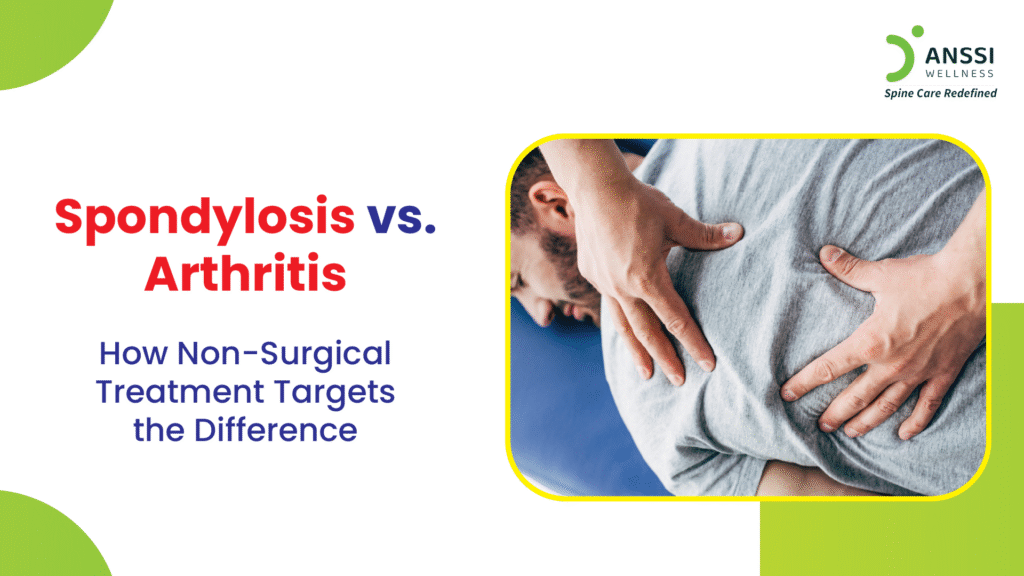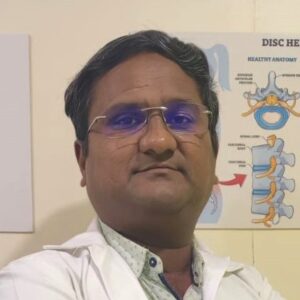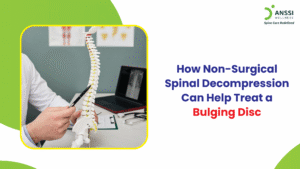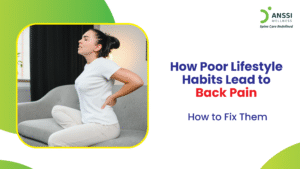Back and joint pain are among the most common complaints as people age, yet many individuals struggle to understand what’s really behind their discomfort. Two of the most frequent culprits, spondylosis and arthritis, are often confused by many, even though they affect different structures of the body.
While both conditions can cause stiffness, pain, and reduced mobility, their underlying causes and treatment approaches differ. The good news is that both can be managed effectively with non-surgical care that promotes healing and restores function naturally.
Understanding Spondylosis
Spondylosis refers to age-related degeneration of the spine, affecting the intervertebral discs, vertebrae, and sometimes the joints between them. As we age, the discs that cushion the vertebrae lose hydration and elasticity, reducing their ability to absorb shock. This wear and tear can cause bone spurs, disc bulges, and nerve compression, leading to pain and stiffness.
Spondylosis most commonly occurs in the cervical spine (neck) and lumbar spine (lower back). People with spondylosis often experience chronic neck or back pain, tightness, or restricted movement. In more severe cases, it can lead to tingling, numbness, or weakness if a spinal nerve is compressed.
While ageing is a major factor, spondylosis can also develop due to poor posture, long hours of sitting, repetitive strain, or previous spinal injuries. Modern lifestyles, especially those involving prolonged screen use or desk jobs, accelerate this degeneration. Over time, this gradual deterioration can cause chronic discomfort if left unaddressed.
Understanding Arthritis
Arthritis is a broader term describing inflammation of the joints. It can affect any joint in the body, including the spine, knees, hips, and hands.
The two main types are:
- Osteoarthritis: A degenerative condition where cartilage, the protective tissue covering the ends of bones, wears away over time, leading to pain and stiffness.
- Rheumatoid Arthritis: An autoimmune disease where the immune system attacks the joints, causing inflammation and damage.
When arthritis affects the spine, it typically targets the facet joints, the small joints connecting each vertebra. As these joints become inflamed or worn out, they cause stiffness, pain during movement, and reduced flexibility.
Symptoms of arthritis include swelling, tenderness, and morning stiffness that may improve with gentle movement. Risk factors include ageing, genetic predisposition, obesity, and previous joint injuries. Unlike spondylosis, which primarily involves disc degeneration, arthritis is primarily an inflammatory joint condition.
Spondylosis vs. Arthritis: The Key Differences
While both conditions affect the spine and can produce similar symptoms, the underlying cause distinguishes them:
- Spondylosis results from degeneration and mechanical wear, primarily in the discs and vertebrae.
- Arthritis involves inflammation of joints, often due to autoimmune or degenerative processes.
Spondylosis tends to cause localised stiffness and mechanical pain, while arthritis may involve swelling and inflammatory pain that worsens after rest. Recognising these differences is crucial for selecting the right treatment approach.
Non-Surgical Treatment Approaches
The goal of non-surgical care is to reduce pain, restore mobility, and improve spinal and joint health, without resorting to invasive procedures. These treatments are often designed to address the root cause of both spondylosis and arthritis, using proven, safe, and drug-free methods.
1. Non-Surgical Spinal Decompression Treatment
This advanced treatment is particularly effective for spondylosis. It works by gently stretching the spine using a computer-controlled decompression table. This stretching relieves pressure from compressed discs and nerves, allowing them to rehydrate and heal naturally. As the pressure on the nerve roots decreases, patients experience significant pain relief and improved spinal flexibility.
Spinal decompression also promotes nutrient and oxygen flow to the affected area, supporting tissue regeneration. Unlike surgery, it’s non-invasive, painless, and requires no recovery time.
2. Physiotherapy and Exercise
A personalised physiotherapy plan helps strengthen supporting muscles, improve posture, and restore movement. Exercises targeting the neck, back, and core can help reduce the load on spinal structures and joints. For arthritis, low-impact exercises like swimming, yoga, or walking improve flexibility and joint lubrication.
Regular stretching helps prevent stiffness and maintain a full range of motion. Trained physiotherapists guide patients through safe, controlled movements to reduce pain and prevent further degeneration.
3. Posture Correction and Ergonomics
Poor posture is a silent contributor to both spondylosis and arthritis-related spinal pain. Ergonomic modifications, such as using lumbar support, adjusting monitor height, and maintaining proper sitting posture, reduce unnecessary strain.
Simple daily habits like standing up every hour, keeping the spine aligned, and sleeping with proper support can make a big difference in long-term spinal health.
4. Lifestyle Modifications
Nutrition, hydration, and daily activity levels play key roles in managing these conditions.
- Eating a balanced diet rich in antioxidants and omega-3 fatty acids helps reduce inflammation and maintain joint health.
- Maintaining a healthy weight minimises stress on the spine and joints, slowing degeneration.
- Avoiding smoking and staying hydrated supports disc health, as dehydration accelerates wear and tear.
5. Heat and Cold Therapy
Alternating heat and cold therapy is a simple yet powerful way to manage pain. Heat relaxes tight muscles and improves blood flow, while cold reduces inflammation and swelling in arthritic joints. These therapies can be easily practised at home as part of a daily routine.
The Non-Surgical Advantage
Unlike surgery, which carries risks, long recovery times, and potential complications, non-surgical treatments focus on healing from within. They not only relieve pain but also strengthen the spine and joints, improving long-term resilience. Most importantly, they preserve natural movement and functionality without dependency on medications.
About ANSSI:
ANSSI Wellness focuses on improving the quality of life for patients suffering from spinal issues, aiming to provide relief where other conventional treatments have failed. Through advanced Non-Surgical Spinal Decompression Treatment, ANSSI is committed to helping patients avoid surgery and recover in a safe, effective, and compassionate environment.
Connect with ANSSI Wellness on LinkedIn, Instagram, and Facebook for expert guidance.




